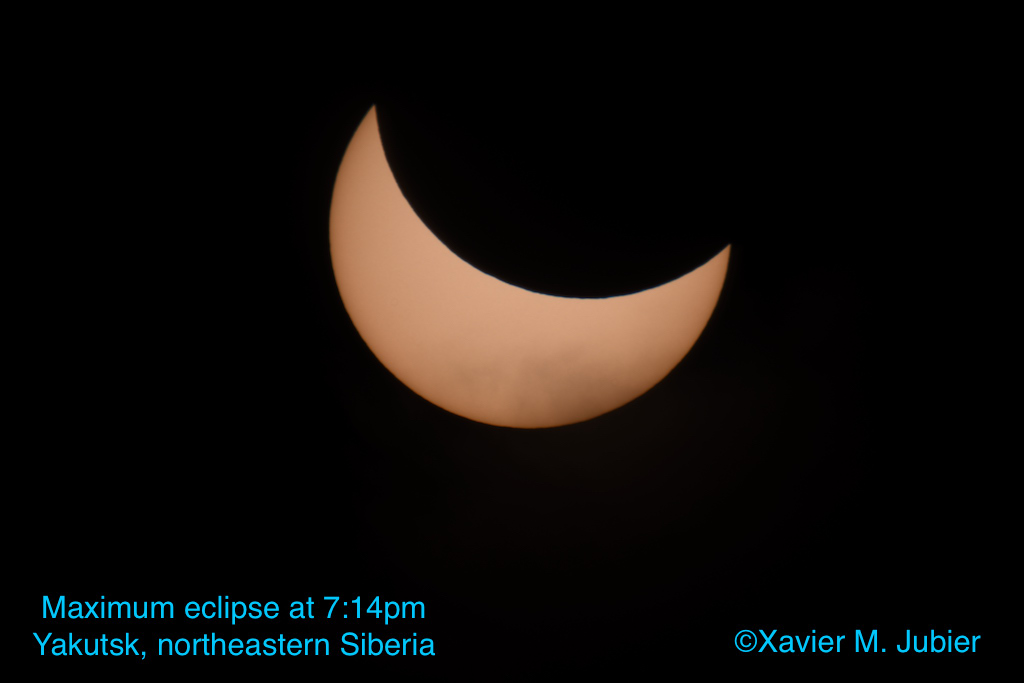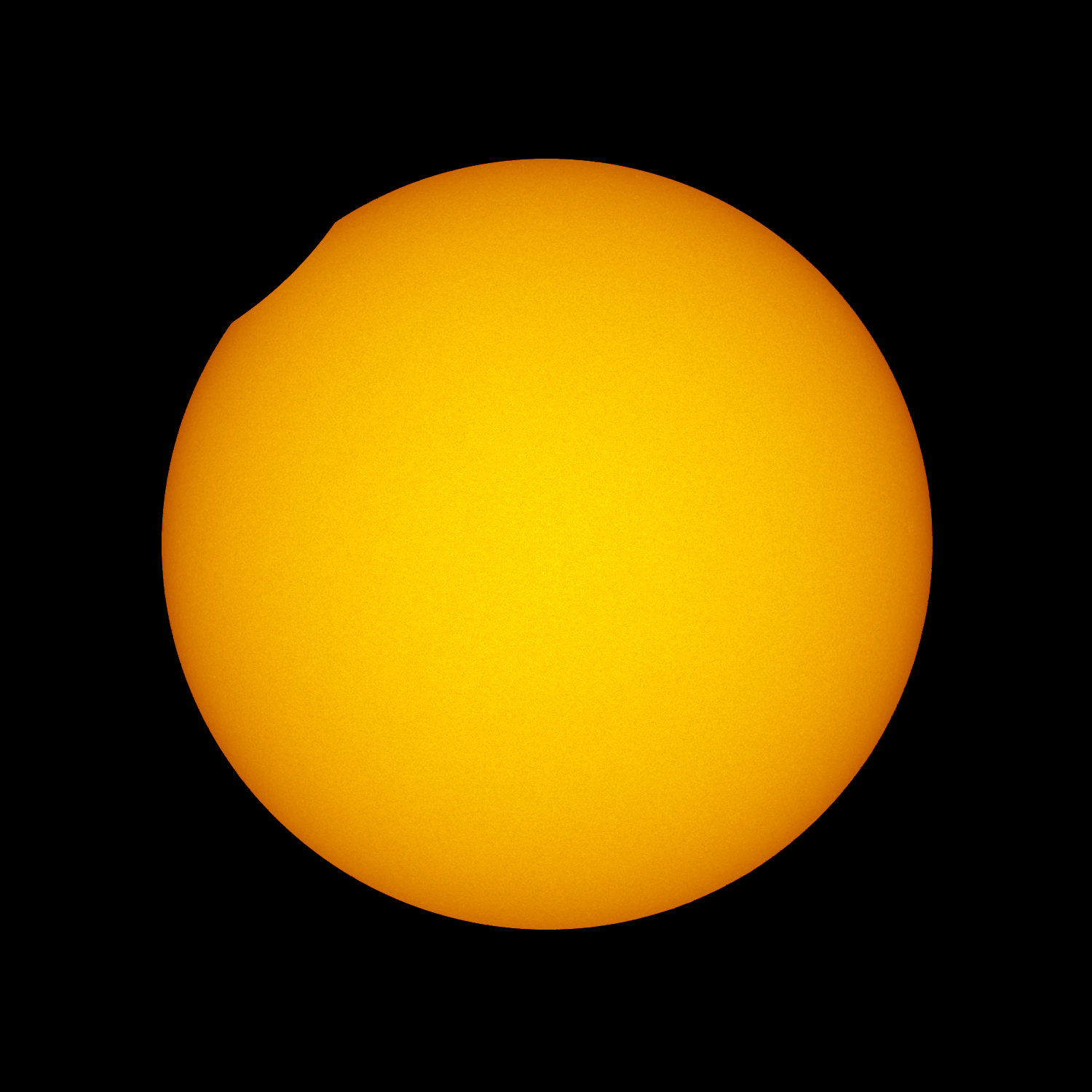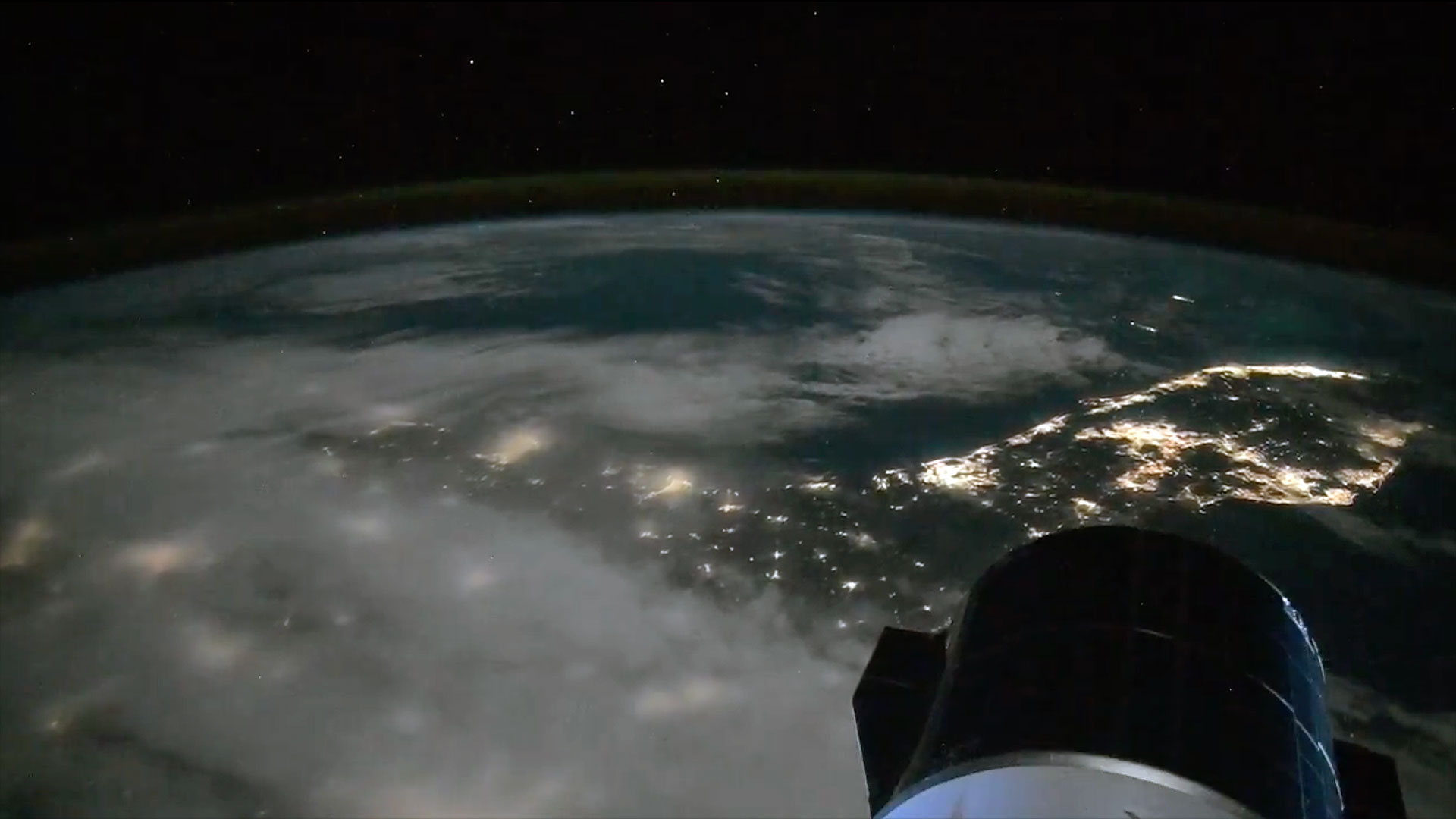Last Solar Eclipse of 2018 Shines In These Awesome Photos
Nearly a year after the Great American Total Solar Eclipse put on a show for millions of skywatchers across the U.S., the moon again made its way in front of the sun for viewers in a different part of the world.
The partial solar eclipse on Saturday (Aug. 11) was the third and final solar eclipse of 2018, and it was visible from most of Asia, northern Europe, Greenland and parts of Canada. Unlike the total solar eclipse of Aug. 21, 2017, when the moon completely blocked the sun, the moon only covered up a portion of the sun's disk today. [Amazing Solar Eclipse Pictures from Around the World]
In northeastern Siberia, astrophotographer Xavier Jubier watched the eclipse from a hotel rooftop in the city of Yakutsk, Russia. Jubier traveled solo more than 4,200 miles (6,800 kilometers) from Paris, France to see the eclipse, he told Space.com in an email. In Yakutsk, the maximum eclipse occurred at 7:14 p.m. local time (1014 GMT), when the moon was covering about 57 percent of the sun. The eclipse ended at 8 p.m. local time, about half an hour before sunset.
Jubier said he plans to return to Siberia for the next partial solar eclipse on Jan. 6, 2019. "My father should join me, plus maybe a few more people, provided they're ready for a true and unique adventure," he said. You can see more of Jubier's photos of Saturday's eclipse on his Facebook page.
From Stornoway, Ireland, astrophotographer Giuseppe Petricca experienced a far less dramatic eclipse. There, the moon took a much smaller bite out of the sun's disk, covering only about 3-4 percent of it during its maximum at 9:40 a.m. local time (0840 GMT). The moon created "a small but suggestive dent on the visible surface of our star," Petricca told Space.com in an email. "Even if this small, it's always fantastic to be able to observe such astronomical events."
A little farther north in Sweden, photographer Christofer Döss of Spaceflash News tweeted one of his photos of the eclipse at Petricca. "The moon took a little bit bigger bite out of the sun up here in Sweden," Spaceflash News tweeted. In northern Sweden, where he captured the photo, the moon was covering about 15 percent of the sun's disk.
Breaking space news, the latest updates on rocket launches, skywatching events and more!
China's CGTN news service hosted a live webcast of the Aug. 11 solar eclipse. You can see just what it looked like in the video below.
The partial eclipse set the scene for some incredible sunset views in part of China, where several news outlets tweeted round-ups of some of the coolest photos taken by skywatchers.
Solar eclipses occur when the moon passes between the Earth and the sun, as seen from the Earth's surface. When the moon perfectly lines up with the sun, it appears to cover the entire solar disk in a total solar eclipse. When it is only partially aligned, a partial or annular ("ring of fire") solar eclipse can result. Because the moon's orbit is tilted, it does not line up with the sun every month in its new moon phase.
After three consecutive partial solar eclipses in 2018 (the first two were on Feb. 15 and on July 13), the world will finally see another total solar eclipse on July 2, 2019. That total solar eclipse will be visible from Chile and Argentina, and much of South America will be able to see at least a partial solar eclipse.
In the path of totality, the moon will cover the sun's disk entirely, casting a dark shadow onto the Earth. Outside the path of totality, skywatchers in South America and part of the Pacific Ocean will see the moon take a "bite" out of the sun like it did this weekend. (Remember: When viewing a partial solar eclipse, protective eyewear is needed to avoid risking permanent damage to your eyes.)
Editor's note: If captured an awesome photo of the partial eclipse that you'd like to share with Space.com and our news partners, send images and comments in to spacephotos@space.com.
Email Hanneke Weitering at hweitering@space.com or follow her @hannekescience. Follow us @Spacedotcom, Facebook and Google+. Original article on Space.com.

Hanneke Weitering is a multimedia journalist in the Pacific Northwest reporting on the future of aviation at FutureFlight.aero and Aviation International News and was previously the Editor for Spaceflight and Astronomy news here at Space.com. As an editor with over 10 years of experience in science journalism she has previously written for Scholastic Classroom Magazines, MedPage Today and The Joint Institute for Computational Sciences at Oak Ridge National Laboratory. After studying physics at the University of Tennessee in her hometown of Knoxville, she earned her graduate degree in Science, Health and Environmental Reporting (SHERP) from New York University. Hanneke joined the Space.com team in 2016 as a staff writer and producer, covering topics including spaceflight and astronomy. She currently lives in Seattle, home of the Space Needle, with her cat and two snakes. In her spare time, Hanneke enjoys exploring the Rocky Mountains, basking in nature and looking for dark skies to gaze at the cosmos.



